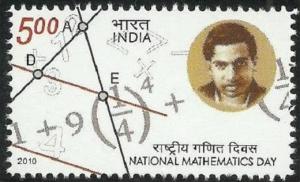As promised in previous post, now I will briefly discuss the remaining two flavors of Integrals.
Stieltjes Integral

Stieltjes
In 1894, a Dutch mathematician, Thomas Stieltjes, while solving the moment problem, that is, given the moments of all orders of a body, find the distribution of its mass, gave a generalization of the Darboux integral.
Let  ,
,  being an integer, be a partition of the interval
being an integer, be a partition of the interval ![[a, b]](https://s0.wp.com/latex.php?latex=%5Ba%2C+b%5D&bg=ffffff&fg=000000&s=0&c=20201002) .
.
For a function  , monotonically increasing on
, monotonically increasing on ![[a,b]](https://s0.wp.com/latex.php?latex=%5Ba%2Cb%5D&bg=ffffff&fg=000000&s=0&c=20201002) , we write:
, we write:

Let  be a bounded function defined on an interval
be a bounded function defined on an interval ![[a, b],\quad a, b](https://s0.wp.com/latex.php?latex=%5Ba%2C+b%5D%2C%5Cquad+a%2C+b&bg=ffffff&fg=000000&s=0&c=20201002) being real numbers. We define the sum
being real numbers. We define the sum

where ![t_i,s_i \in [x_{i-1} , x_i]](https://s0.wp.com/latex.php?latex=t_i%2Cs_i+%5Cin+%5Bx_%7Bi-1%7D+%2C+x_i%5D&bg=ffffff&fg=000000&s=0&c=20201002) be such that
be such that
![f(t_i) = \text{sup} \{ f(x) : x \in [x_{i-1}, x_{i}]\}](https://s0.wp.com/latex.php?latex=f%28t_i%29+%3D+%5Ctext%7Bsup%7D+%5C%7B+f%28x%29+%3A+x+%5Cin+%5Bx_%7Bi-1%7D%2C+x_%7Bi%7D%5D%5C%7D&bg=ffffff&fg=000000&s=0&c=20201002) ,
,
![f(s_i) = \text{inf} \{ f(x) : x \in [x_{i-1}, x_{i}]\}](https://s0.wp.com/latex.php?latex=f%28s_i%29+%3D+%5Ctext%7Binf%7D+%5C%7B+f%28x%29+%3A+x+%5Cin+%5Bx_%7Bi-1%7D%2C+x_%7Bi%7D%5D%5C%7D&bg=ffffff&fg=000000&s=0&c=20201002)
If the  and
and  are equal, we denote the common value by
are equal, we denote the common value by  and call it Steiltjes integral of
and call it Steiltjes integral of  with respect to
with respect to  over
over ![[a,b]](https://s0.wp.com/latex.php?latex=%5Ba%2Cb%5D&bg=ffffff&fg=000000&s=0&c=20201002) .
.
Lebesgue Integral

Lebesgue
Let me quote Wikipedia article:
The integral of a function f between limits a and b can be interpreted as the area under the graph of f. This is easy to understand for familiar functions such as polynomials, but what does it mean for more exotic functions? In general, for which class of functions does “area under the curve” make sense? The answer to this question has great theoretical and practical importance.
In 1901, a French mathematician, Henri Léon Lebesgue generalized the notion of the integral by extending the concept of the area below a curve to include functions with uncountable discontinuities .
Lebesgue defined his integral by partitioning the range of a function and summing up sets of x-coordinates belonging to given y-coordinates, rather than, as had traditionally been done, partitioning the domain.
Lebesgue himself, according to his colleague, Paul Montel, compared his method with paying off a debt: (see:pp. 803, The Princeton Companion to Mathematics)
I have to pay a certain sum, which I have collected in my pocket. I take the bills and coins out of my pocket and give them to the creditor in the order I find them until I have reached the total sum. This is the Riemann integral. But I can proceed differently. After I have taken all the money out of my pocket I order the bills and coins according to identical values and then I pay the several heaps one after the other to the creditor. This is my integral.
A set  is said to be Lebesgue measurable, if for each set
is said to be Lebesgue measurable, if for each set  the Carathéodory condition:
the Carathéodory condition:

is satisfied, where  is called outer measure and is defined as:
is called outer measure and is defined as:

where  is a countable collection of closed intervals
is a countable collection of closed intervals ![[a_n,b_n], a_n\leq b_n](https://s0.wp.com/latex.php?latex=%5Ba_n%2Cb_n%5D%2C+a_n%5Cleq+b_n&bg=ffffff&fg=000000&s=0&c=20201002) , that cover
, that cover  .
.
The Lebesgue integral of a simple function  on
on  , where
, where  ,
,  are pairwise disjoint measurable sets and
are pairwise disjoint measurable sets and  are real numbers, is defined as:
are real numbers, is defined as:

where,  is the Lebesgue measure of a measurable set
is the Lebesgue measure of a measurable set  .
.
An extended real value function  defined on a measurable set
defined on a measurable set  is said to be Lebesgue measurable on
is said to be Lebesgue measurable on  if
if ![f^{-1} ((c,\infty]) = \{x \in\mathcal{A} : f(x) > c\}](https://s0.wp.com/latex.php?latex=f%5E%7B-1%7D+%28%28c%2C%5Cinfty%5D%29+%3D+%5C%7Bx+%5Cin%5Cmathcal%7BA%7D+%3A+f%28x%29+%3E+c%5C%7D&bg=ffffff&fg=000000&s=0&c=20201002) is a Lebesgue measurable subset of
is a Lebesgue measurable subset of  for every real number
for every real number  .
.
If  is Lebesgue measurable and non-negative on
is Lebesgue measurable and non-negative on  we define:
we define:

where the supremum is taken over all simple functions  such that
such that  .
.
The function  is said to be Lebesgue integrable on
is said to be Lebesgue integrable on  if it’s integral over
if it’s integral over  is finite.
is finite.
The Lebesgue integral is deficient in one respect. The Riemann integral generalizes to the improper Riemann integral to measure functions whose domain of definition is not a closed interval. The Lebesgue integral integrates many of these functions, but not all of them.








You must be logged in to post a comment.